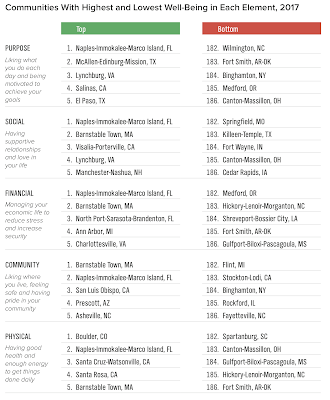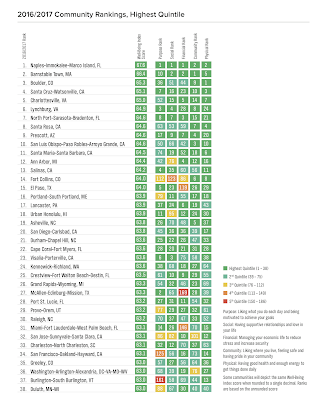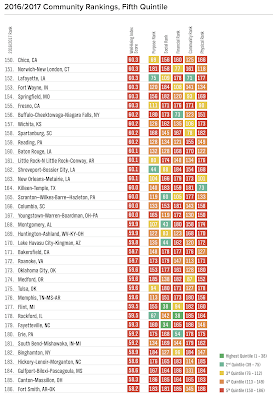
This article was last updated on April 16, 2022
Canada: ![]() Oye! Times readers Get FREE $30 to spend on Amazon, Walmart…
Oye! Times readers Get FREE $30 to spend on Amazon, Walmart…
USA: ![]() Oye! Times readers Get FREE $30 to spend on Amazon, Walmart…
Oye! Times readers Get FREE $30 to spend on Amazon, Walmart…
While Washington seems to be spending its energy on fake news and Russiagate, Main Street Americans are finding it increasingly difficult to meet their basic needs. According to a recent study entitled “The Well-Being and Basic Needs Survey” (WBNS) by the Urban Institute, many families in the United States are considered financially insecure despite an economy that is operating at full speed. Here are some interesting excerpts from this report.
The WBNS sample is drawn from 7588 participants and surveys these key domains:
1.) Housing and neighborhoods
Housing tenure
Housing type
Rental assistance
Housing and utility affordability Housing stability/evictions Neighborhood quality/safety
Family and community support
2.) Food security
Household food insecurity
Reliance on charitable feeding programs
3.) Health status and health care
Self-reported health status
Disability status
Chronic conditions
Psychological distress
Health insurance coverage
Unmet needs for medical care because of costs
Problems paying family medical bills
Perceived stress
4.) Employment
Employment status
Employer type
Hours worked per week
Labor force participation
Factors affecting ability to work
Employee benefits
5.) Family income
Sources of family income
Family income as a percentage of FPL
6.) Safety net program participation
SNAP
TANF or other cash assistance
Medicaid/CHIP
Child care assistance
Free or reduced-price school lunch
7.) Family financial security
Use of alternative financial services (e.g., payday loans, auto title loans) Missed payments on credit cards or loans
Self-reported financial well-being
Unexpected family income changes
Unexpected household expenditures
Contacts by debt collection agencies
Confidence in ability to pay for unexpected expenses
Here are some of the findings:
1.) 10.2 percent of non-elderly adults reported problems paying their rent or mortgage.
2.) 13 percent of respondents were unable to pay utilities bills.
3.) 68.2 percent of adults reported being employed and 80.7 percent of those were working full-time. When respondents’ incomes are below 150 percent of the Federal Poverty Level, the employment rate drops to 43.9 percent.
4.) 18 percent of respondents had problems paying family medical bills in the 12 months before the survey. When respondents’ incomes are below 150 percent of the Federal Poverty Level, 25.8 percent of respondents reported problems paying medical bills.
5.) 17.8 percent of respondents reported that they had unmet medical news due to high costs in the 12 months before the survey. When respondents’ incomes are below 150 percent of the Federal Poverty Level, 27.3 percent of respondents reported unmet medical needs.
6.) 23.3 percent of respondents reported that their household experienced food insecurity in the 12 months before the survey. When respondents incomes are below 150 percent of the Federal Poverty Level, 46.2 percent of respondents report food insecurity.
On an overall basis, according to the Urban Institute study, nearly 40 percent of adults reported that they had trouble meeting at least one basic need; housing, utilities, health care or food. Although these problems tend to occur at lower household income levels, the ability to meet all of life’s basic needs extends across the income distribution. As well, the authors observed that adults who report one type of hardship often report other problems as well.
Let’s take a brief look at a study by Gallup and Sharecare from 2018. According to the “State of American Well-being: 2017 Community Well-being Rankings” the state of well-being can be measured using the following elements:
1.) Purpose: liking what you do each day and being motivated to achieve your goals
2.) Social: having supportive relationships and love in your life
3.) Financial: managing your economic life to reduce stress and increase security
4.) Community: liking where you live, feeling safe, and having pride in your community
5.) Physical: having good health and enough energy to get things done daily
Well-being varies significantly across the United States as shown here:
Here are the communities with the highest overall well-being scores:
Here are the communities with the lowest overall well-being scores:
Let’s summarize. Against the backdrop of the supposed health of the U.S. economy, we can clearly see that a very significant portion of Americans are struggling to meet even the most basic of needs like housing, medical care and food. Despite what Washington may be telling us about the strength of the economy, it is apparent that the well-being of Americans is a mirage for millions of households.
Click HERE to read more from this author.
You can publish this article on your website as long as you provide a link back to this page.




This is a very informative and compelling article on the well being of Americans and all we need to know about this point of view.